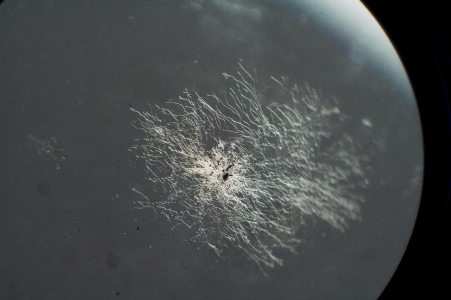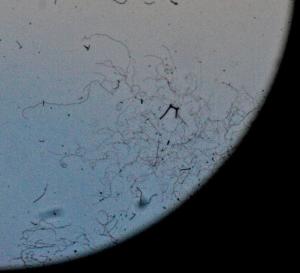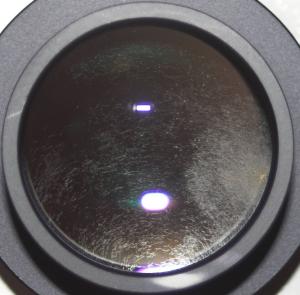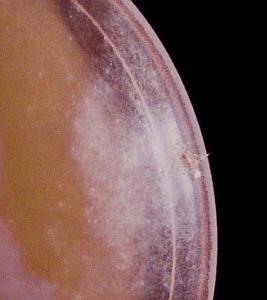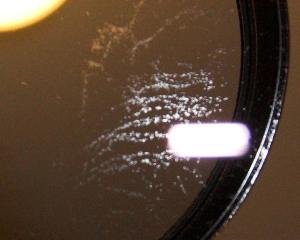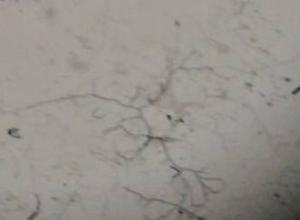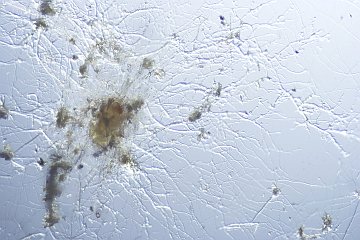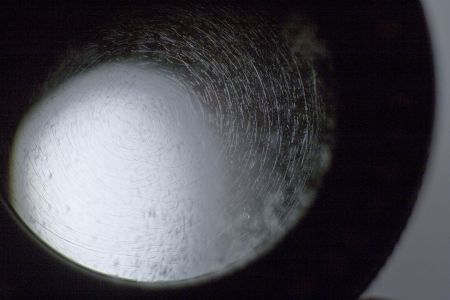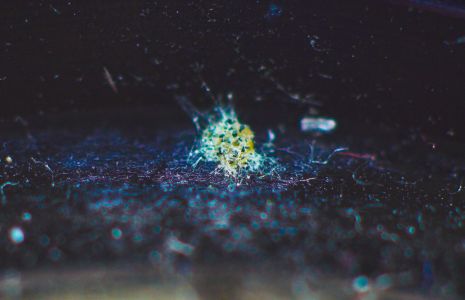Fungus in Lenses - for some the worst defect a photographic lens can have!
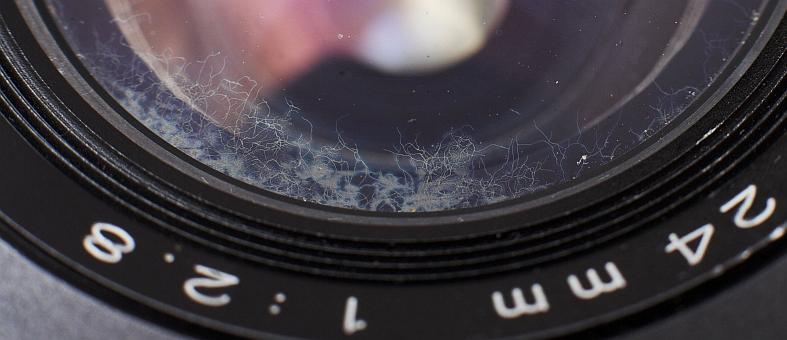
What is lens fungus?
Lens fungus is a kind of fungus. This kind of fungus can grow on the smooth surfaces of lenses. It can harm the lens glass surface or coating with its products of metabolism.
According this German Wikipedia article lens fungus is a Oomycete or or Sac Fungi / Ascomycota.
I found that Aspergillus Niger is found sometimes on optical glass. It seem that several kinds of fungi could harm our lenses
How does the lens fungus gets inside the lens ?
Now and then a photographer works in humid air, like in a rainforest, a barn, during rain, or fog.
As soon as one change the lens, or zoom, or even focus, some air can enter even a sealed lens. Some zoom lenses extend about 150ml volume or more - and this volume is filled with the air around, with all its water and bacteria and such.
When a lens is stored afterwards in a more or less air thight
compartment, the humidity stays in the lens.
Under which conditions fungus grows - whats about ideal storage ?
There was a free avialable document from the Canadian Army, but this is no longer avialable (in case one has this document, I would be glad to get it). There is documented where lens fungus grows. They state 0°C .. 40°C and 70..75% relative humidity as ideal fungus growth conditions.
It needs only few weeks to develope. Ingest for the lens-fungus are fingerprints, dust, cloth fabrics, leather-bag fibers or leather optics cloth. Furthermore some paint could be an ingest for the lens-fungi.
UV radiation inhibit lens fungis growth.
From my point of view fungus grows when a lens is seldom used, and probably stored in in photo bags or even lens bags. The less air circulates, the more prone to fungi growth. This could be a reason why old lenses which were not used some years, and probably sold years after the passing away from its user are sold with fungus.
Regular used lenses have seldom fungus - but
residents from humid country have even fungus on regular used lenses.
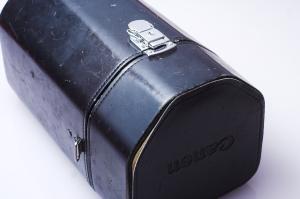
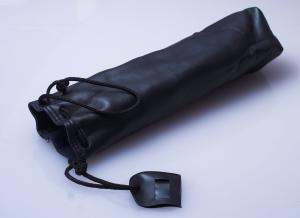
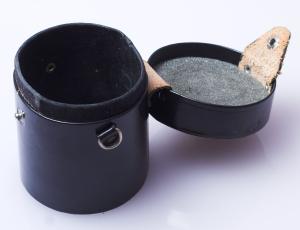
Which lenses are prone to get lens fungus?
There is a rumor that fungus needs Canada Balm to grow - this is only used in old lenses made earlier than ~1970. And all modern lenses with synthetic glue are supposed to at no risk. Furthermore modern glass, hard-coatings and sealings would prevent every risk.
This is NOT true!
In German photo forum DForum a user had supposable fungus in his Canon EF 300mm f/2.8 L IS USM. A quiet modern lens, and an expensive lens with best material and build quality. Here a German photgrapher has fungus in his Sigma AF-D 300mm f/4.0. A user with a modern stabilized Canon 12x36 IS binocular asked me wheter I could clean it from its fungus. A Nikon Nikkor AF-S 24-70mm f/2.8 G and a sealed Canon EF 70-200mm f/2.8 L IS USM got fungus too.
I suppose that selaed lenses are prone to get fungus: As soon as mositure gets in, it needs very long to get out again. And these lenses are not airthight, so humid air with spore could get inside the lens.
I got lenses made from 1960 till 1990 with fungus. Several zoom lenses, a enlarging lens, my high quality Canon FD 300mm f/2.8 L had fungus too. I got a Canon EF 50mm/1.8 with fungus too. In my Tokina 60-300mm I have a lens with fungus inside the glued front lens - this is most likely no Kanada Balm.
As far as I understand lenses with changing size like some zoome lenses are prone to get fungus. This air exchange while zooming is a easy way for humind air to get inside the lens.
How does fungus look like ?
Fungus has in most cases a fern like structure, or some describe it as looking like a spider web.
Sometimes fungus looks like mold. There are very different manifestations.
Here a fungus image made with a scanning electron microscope.
How to avoid buying used lenses with fungus ?
You could not avoid it at all - my opinon.
Ore more exactly not with normal methods.
I got a Canon EF 50mm f/1.8 I very cheap, it was pretty dirty - but without signs of fungus I thought. But during the cleaning I recognized a small structure. At a microscope I saw this was fungus. At this time I had already much experience with fungus and I have very good eyesight. Without this, I would probably sold this lens as "without fungus" afterwards. So I did not sell it - more exactly I sell rarely a lens.
But others will clean the fungus away, and sell the lens as "clean" - but some spores will
live in the lens.
I think such things happen every day. One could not see spores.
Lens fungus is not general knowledge for lens sellers - and it is sometimes hard to detect.
I got the Canon FD 300mm f/2.8L and a Canon FD 24mm f/1.4L with fungus - both sellers claim they did not realize fungus in the lens - and I think this could be true.
Is lens fungus infectious for other lenses?
There are opposed opinons!
And most are not based on much knowledge.
Some throw all lenses with fungus away, others use such lenses near their clean lenses.
In my opinon fungus contamination is possible, but not very common. So no high risk.
The spores need to get outside the infected lens, and inside the "clean" lens. This could probably happen when a zoom lens is
pressed to its samller size inside the camera-bag. Furthermore the fungi spores need a correct climate to grow. The latter could be avoided under normal circumstances (but not easy in very hot and humid countrys).
In normal air fungus spores are in the air, these could most likely be enough to infect a lens.
My opinon is, that no inefcted lens is needed to infect another lens. My first lens with fungus was bought brand new, and got fungus alone in a basment room after a defect of the heating installation - 100% relative humidity, and ~30°C temperature.
With more than 100 lenses, and about 15 lenses with lens fungus, I got not a single infection in during some years.
And these lenses have close contact in a drawer, or in the camera bags.
But to be on the safe side, I have other lenses separated (those which I probably want so sell) or highly collectible.
How could fungus lenses be cleaned?
It seem that fungi in their early life could be easy whisked away. No special cleaning tools needed.
But - what is away, and what stays on the lens - like spores in the lens tube or lens mechanics?
A lens that looks after clenaing clean like new has probably still
some spores there.
But - does this result in a new infection?
I think some spores are no problem - because most lenses have fungus spores on them, they are in the air. Wheter the spores could cause lens fungus or not is hard to tell. The Aspergillus Niger fungi
is the one that is the black mold on some fruits and vegetables (for example onion, grapes, peanuts).
One should take care not to give the conditions for fungus groth - healty lenses seems to prefer fresh air and light :-)
What about lenses whose surface is damaged from fungus?
Most likely lens polishing is the only way to restore these lenses - but how to polish a lens to its exact form - with tolerances as low as ~100nm?
Normaly lens manufacturers use for each lens a perfect fitting form - how should a repair technican without knowledge about the exact radius do such? I think at the moment low tech polishing is not a really good idea.
There are some cleaning methodes for
lens glass fungus - but some seems not based on scientific research:
- Formaldehyde gas (cancerous and toxic)
- Gamma radiation is used in food industry to kill fungi. 1-10 kGy, roughly 700 times the lethal dose for men.
- Thymol
- Hydrogen peroxide
- Heat - some put the hole lens in an oven for an hour at 60..80°C. I do not trust this method. At least the lens itself without tube and mechanics should be heated, the chemical glues, grease and electronics could probably not withstand this temperatures. Most ovens have a very inaccurate temperature. Aspergillus Niger fungi seems to decline to 10% of its number at the start after 10 minutes at 60°C - but it is not 100% killed after some hours.
- UV radiation: Glass aborbes UV radiation, so best place the side with fungus towards the sun. But Aspergillus Niger needs for example a high dose UV radiation, 132 mWs/cm²
- Ammonia
- Alcohol, like a fungicide spray I use
But before you start clenaing lenses, I want to give you a hint about the risk form such fungus - even without these partly risky cleaning methodes.
Aspergillus could be used as biological warfare agent!
Further articles about lens separation and Schneideritis.
Further reading:
- A collection from differens sources
- Toomas Tamms Site
- Carl Zeiss (German) - they have made research about fungus and clenaing methodes. They had a way for good desinfection, but it is no longer operating.
